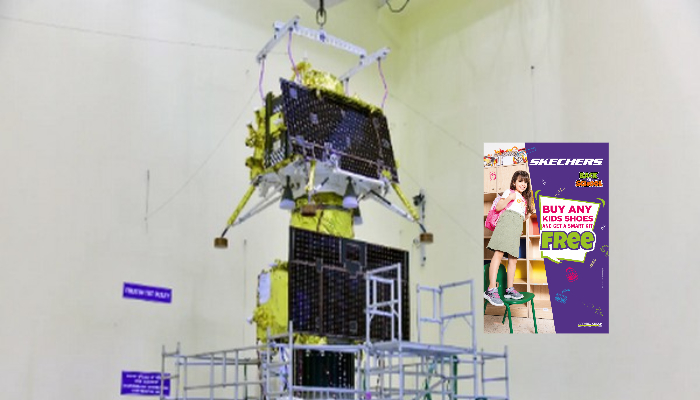
New Delhi : The second and final deboosting operation of Chandrayaan-3 was carried out successfully, Indian Space Research Organisation (ISRO) said in the early hours of Sunday.
Following this, the module would undergo internal checks. The powered descent is expected to start on August 23.
Deboosting is the process of slowing down to position itself in an orbit where the orbit's closest point to the Moon (Perilune) is 30 km and the farthest point (the Apolune) is 100 km.
“The second and final deboosting operation has successfully reduced the LM orbit to 25 km x 134 km. The module would undergo internal checks and await the sun-rise at the designated landing site. The powered descent is expected to commence on August 23, 2023, around 1745 Hrs. IST,” ISRO said on X (formerly Twitter).
Earlier on Friday, Chandrayaan-3's Vikram lander underwent a crucial deboosting manoeuvre and descended to a slightly lower orbit, after successfully getting separated from the propulsion module the day before.
"The Lander Module (LM) health is normal. LM successfully underwent a deboosting operation that reduced its orbit to 113 km x 157 km. The second deboosting operation is scheduled for August 20, 2023, around 0200 Hrs. IST," ISRO stated.
Meanwhile, the Chandrayaan-3 mission's lander is named after Vikram Sarabhai (1919–1971), who is widely regarded as the father of the Indian space programme.
ISRO is bidding to make a successful soft landing on the moon, which will make India the fourth country in the world to achieve the feat after the United States, Russia, and China.
The stated objectives of Chandrayaan-3, India's third lunar mission, are safe and soft landing, rover roving on the moon's surface, and in-situ scientific experiments.
The approved cost of Chandrayaan-3 is Rs 250 crores (excluding launch vehicle cost).
Chandrayaan-3 is the ISRO's follow-up attempt after the Chandrayaan-2 mission faced challenges during its soft landing on the lunar surface in 2019 and was eventually deemed to have failed its core mission objectives.
Moon serves as a repository of the Earth’s past and a successful lunar mission by India will help enhance life on Earth while also enabling it to explore the rest of the solar system and beyond.
Historically, spacecraft missions to the Moon have primarily targeted the equatorial region due to its favourable terrain and operating conditions. However, the lunar south pole presents a vastly different and more challenging terrain compared to the equatorial region.